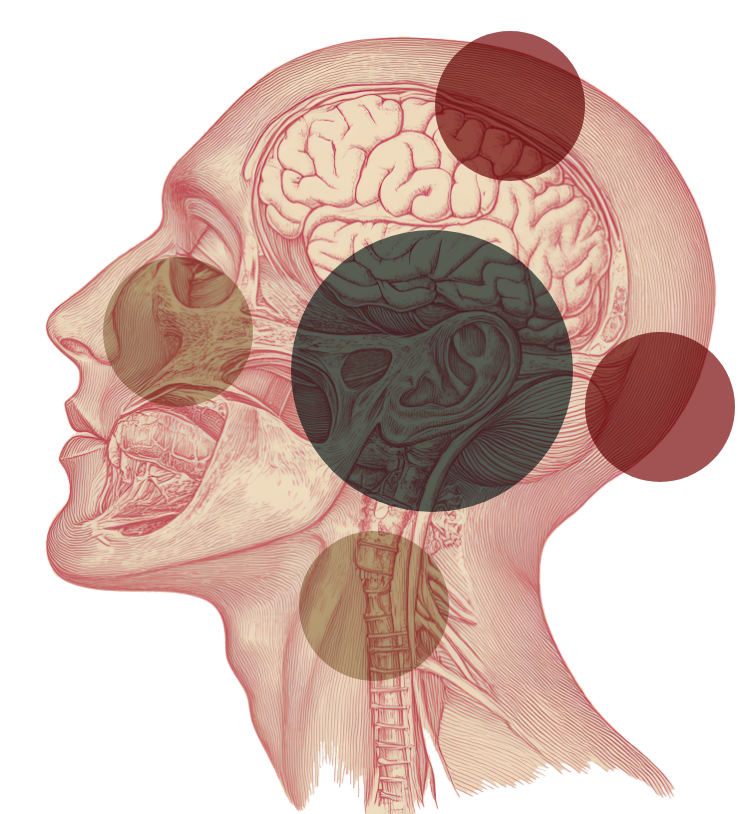
What forms the shape to the nose?
The nose is formed by bone and cartilage located beneath the skin. The upper part of the nose consists of bone like a hard roof. The middle and lower parts of the nose are made of cartilage and are softer. The skin of the nose varies in thickness from person to person, and this can affect its shape.
What are the reasons for surgery?
The main reason for rhinoplasty is cosmetic. However, if there is a problem, the surgery can also contribute to improving nasal breathing.
The overall appearance of the human face varies. The shape of the nose depends on the shape of the facial bones, the dimensions of the face, the color and thickness of the skin, and the human ethnicity.
Most people usually come to terms with their appearance, but some seek changes. The most common reasons for these desires are a crooked or curved nose, a hump on the nose, a drooping nose tip, a narrow or wide nose, and over- or under-projection of the soft tip of the nose.
There is no perfect nose, and any change should be in harmony with the other features of the face. It is very important for the patient to have realistic expectations about what rhinoplasty can offer, otherwise they may be disappointed.
What is rhinoplasty?
Rhinoplasty is the surgical procedure aimed at changing the shape of the nose. There are various rhinoplasty techniques depending on what needs to be changed in the specific nose. The nose can be straightened, shortened, lengthened, or its angles altered.
Pieces of cartilage or bone may need to be used to achieve this. Sometimes the septum (the wall that divides the nose into left and right) if curved, requires simultaneous correction (septoplasty).
Before & After
What are the success rates?
Each person’s nose and face are different. The thickness of the nasal skin can make a noticeable difference in the shape after surgery. If the skin is very thin, certain imperfections in the nose such as bumps and depressions may remain visible. If the skin is thick, these imperfections are less noticeable.
The surgeon always aims for the best final result but it is impossible to predict it with absolute accuracy. It is important that the patient’s expectations are discussed with the surgeon. About 90-95% of patients are usually satisfied after surgery, but a small percentage seek further procedures.
Clinical photos of the face and nose before and after surgery are necessary—not only for the patient’s record but also for proper surgical planning.
The surgery is usually performed under general anesthesia. The incisions are almost all inside the nose except in some cases (open rhinoplasty) where a small external incision is needed at the base between the nostrils. The skin is carefully lifted from the bone and cartilage of the nose. Then, some small fractures of the nasal bone may be necessary, as well as partial removal or addition of cartilage or bone for proper reshaping of the nose.
Postoperatively, and for about 6 months, protecting the skin of the nose—mainly from the sun—is crucial. Use of sunscreen and a hat is recommended.
Also, some slight numbness of the soft part of the nose and mild swelling may occur, lasting from 6 months up to a year before fully resolving. This is also the time frame needed to see the final results of the surgery.
How long might I be off work?
Hospital stay after surgery is usually one night. In some cases, the patient may return home immediately after the procedure, depending on circumstances.
Recovery at home usually takes about 1-2 weeks.
Sports with risk of nasal injury are not recommended for at least 6 weeks.
What are the possible complications?
The most common possible complication of rhinoplasty is nosebleed (epistaxis). If this occurs during or after the surgery, it can be managed by cauterization or packing (tampon).
Rarely, the surgery may cause a perforation, i.e., a hole in the nasal septum inside the nose. Even if this occurs, most patients have no symptoms and no treatment is necessary. A small number of patients may complain of whistling, crusting, or occasional nosebleeds. These can mainly be managed with conservative treatment.
Is there an alternative non-surgical treatment?
There are no specific medications a patient can take to change the shape of their nose. In some cases, injections of microspheres into the nasal skin can produce a small temporary change.
Some patients with unrealistic expectations about rhinoplasty results may suffer from body dysmorphic disorder. These patients should not undergo surgery but should be referred for psychological help and treatment.